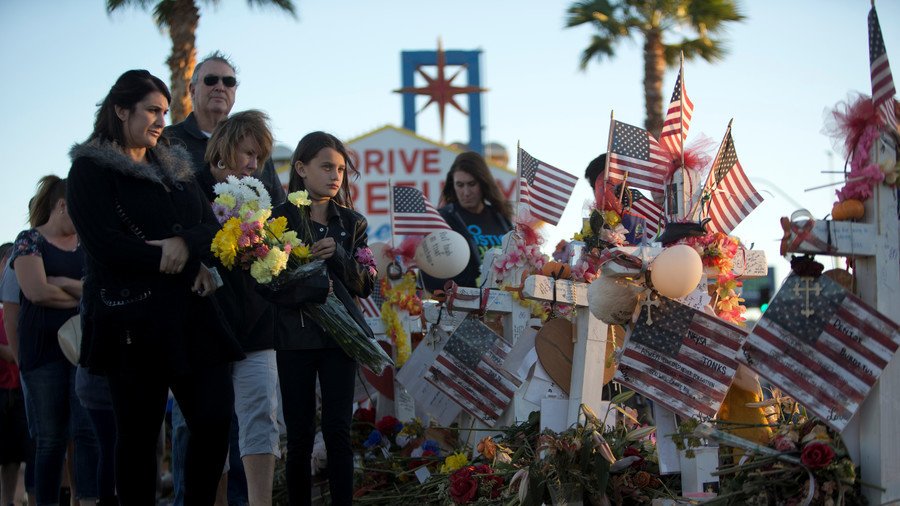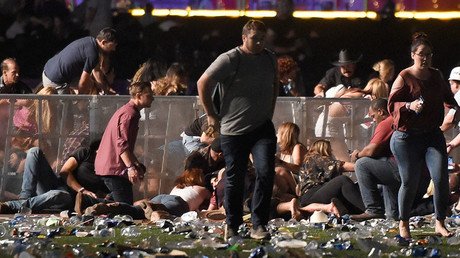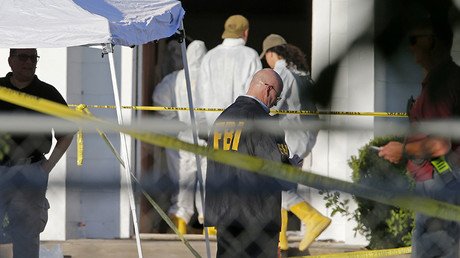Motivated by vendetta or personal grievance: Secret Service report describes the average mass killer

The average mass attacker in America is not an ISIS terrorist or a child with an AR-15. He is male, middle-aged, and aggressively self-centered. He has a history of mental illness and is fuelled by a personal vendetta.
That is according to the US Secret Service, which profiled the perpetrators of the 28 mass attacks that took place in public places in the United States last year, from Orlando to Las Vegas. These incidents - defined as attacks in which three or more people were harmed - claimed the lives of 147 people and injured nearly 700 others.
John Robert Neumann was one of these perpetrators. After an honorable discharge from the Army in 1999, the 45-year-old had a history of petty crimes, including a driving offence in 2000, possessing stolen property in 2003, marijuana possession and leaving the scene of an accident in 2009.
Neumann worked for Fiamma, an Orlando company that manufactures RV awnings, until 2017, when he was fired in April for starting fights with co-workers. This was not without precedent. In 2014, Neumann was accused of battering a colleague, who later dropped the charges.
This Man John Robert Neumann, 45 murdered FIVE ex colleagues after being sacked at his place work https://t.co/CANWpGWWPcpic.twitter.com/t2wFT0SEG2
— Start-Up Guy (@misanpinnick) 6 June 2017
After his firing, one of Neumann’s managers, Robert Snyder, was fearful he would return to exact his revenge. On June 5, Snyder’s fear came true. Armed with a handgun and several knives, Neumann slipped into the factory through a rear door, where he singled out five former co-workers, including Snyder, and executed them with shots to the head.
Neumann allowed several other workers to escape and committed suicide as deputies closed in on the scene.
Neumann is a typical mass attacker, according to the Secret Service’s study. All of the perpetrators profiled in the study were male, and Neumann was just above the average age of 37. All age groups are represented fairly evenly in the study, with the exception of those over the age of 55, who make up only seven percent of all mass attackers.
Like Neumann, 54 percent of the subjects had a history of illicit substance abuse, including alcohol and marijuana. Another 71 percent also had criminal histories, including non-violent (57 percent) and violent (54 percent) offences.
One-third of the subjects, like 26-year-old Devin Patrick Kelley, had a history of domestic abuse. Kelley had been jailed in 2012 for brutally abusing his wife and stepson, and was investigated for rape and sexual assault in 2013.
On November 5, 2017, Kelley entered a Baptist church in Sutherland Springs, Texas, and opened fire with a semiautomatic rifle. Kelley killed 26 people and injured 20 before turning the gun on himself and taking his own life.
Neumann and Kelley are typical in that they killed not for an ideology or belief, but for personal reasons. In total, 41 percent of the 28 attackers were motivated by personal vendettas. Twenty-one percent of these grievances came from the workplace. The attacks that involved subjects who pre-selected their targets, as happened in Neumann’s case, are typical of attacks stemming from workplace grievances.
Robert Snyder was right to be fearful of Neumann too. Eight out of 10 attackers behaved in a way that raised concerns among their colleagues or friends. Like Neumann, 32 percent committed suicide after the attack.
Mental health problems are another common trait of mass attackers. Sixty-four percent experienced some mental health symptoms prior to striking, including paranoia, delusions, hallucinations, suicidal thoughts and depression. Eighty-two percent were described as “aggressively self-centered.”
While killers like Neumann were personally motivated to take violent revenge on those around them, 25 percent were motivated by ideology. These ideologies ranged from government conspiracy theories and white supremacy, to radical black nationalism and radical Islam.
White supremacy motivated 20-year-old James Alex Shields to plow his Dodge Challenger into a crowd of protesters in Charlottesville, Virginia; and radical Islam motivated Sayfullo Habibullaevic Saipov to mow down pedestrians in New York in the name of ISIS. However, according to the study, five of the seven attackers who were motivated by ideology, also suffered from paranoia, hallucinations or delusions. Moreover, for two of the attackers, their psychoses played “a dominant role” in the adoption of their belief systems.
School attacks made up five of the 28 attacks studied, and while gun violence in American schools has dominated media coverage since last month’s Parkland tragedy, separate research from Northeastern University shows that school shootings, and mass shootings in general, have been steadily declining since the early 1990s.
Think your friends would be interested? Share this story!














